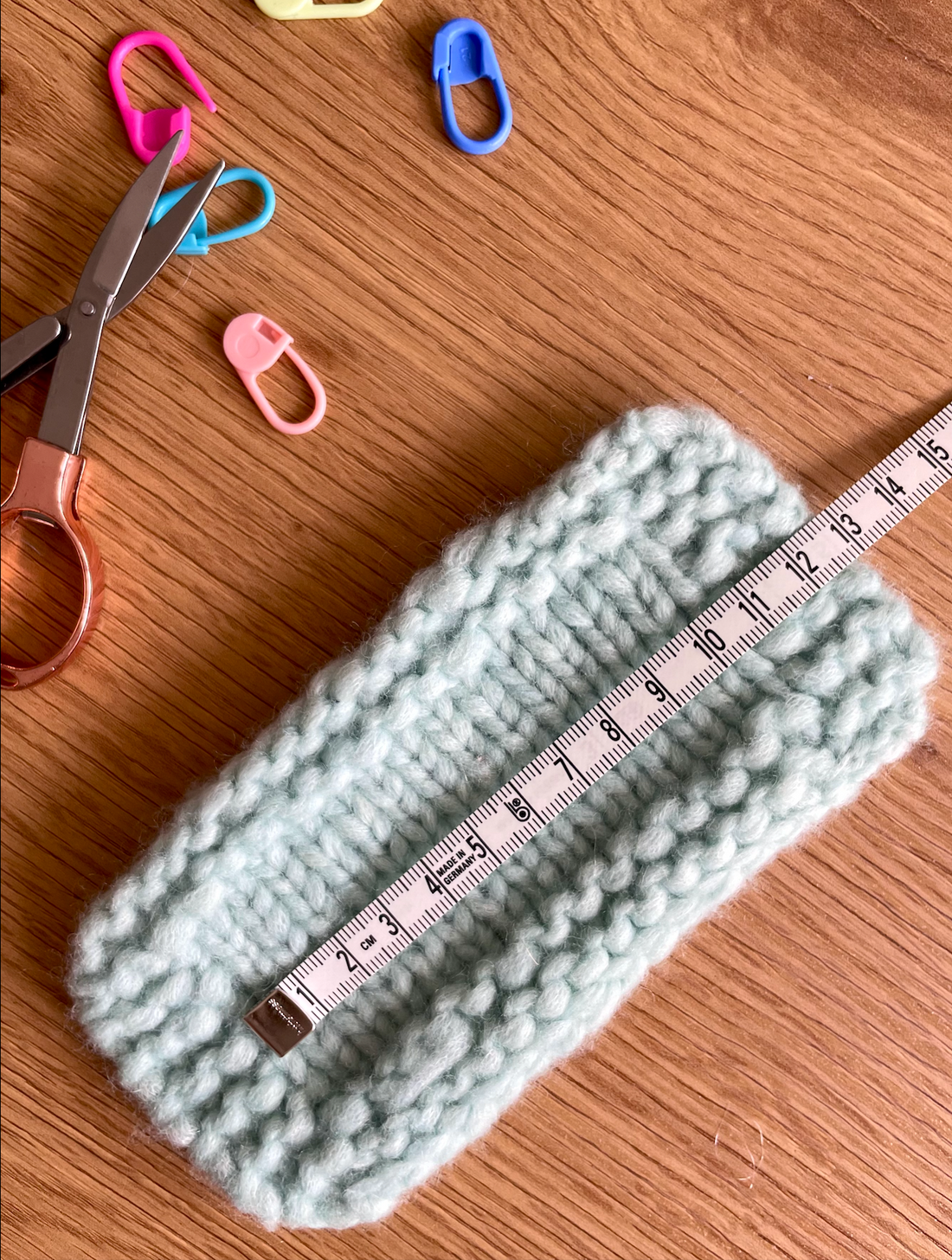If you've read a knitting pattern, you've probably seen the term "gauge" before. But what does it really mean, and why is it important? Let's take a look!
What is gauge? 👀
Gauge refers to the number of stitches you get per 10 cm. The primary reason to knit a gauge swatch is to ensure that your finished project matches the intended size. Different knitters have different tension, and even slight variations can significantly alter the dimensions of a garment. By knitting a swatch, you can adjust your needle size to match the pattern’s gauge, ensuring the piece will fit as expected.
How to measure the gauge 📏
Cast on a bigger number of stitches than the required number of stitches per 10 cm. For example, if the pattern gauge is 15 stitches, you could cast on 25 stitches. This allows you to measure the center of the swatch without edge disortions.
Knit the swatch in the same stitch as your project. If your project is primarily in stockinette stitch, knit your swatch in stockinette.
Wash and block your swatch the same way you will treat the finished garment. This step is crucial as many fibers change significantly after washing.
Once dry, measure the number of stitches over a central 10 cm area. Compare these numbers to the pattern's gauge.

In this example the swatch shows that we've got a gauge of 13 stitches per 10 cm.
What now? 🤔
After measuring your gauge, there are three alternative outcomes:
- You got the same gauge as the pattern: Great! You're ready to cast on your project.
- You have less stitches per 10 cm than the pattern calls for: Choose a smaller needle size. Knit a new swatch and measure again before you cast on your project.
- You have more stitches per 10 cm than the pattern calls for: Choose a bigger needle size. Knit a new swatch and measure again before you cast on your project.
Be aware of this ⚠️
When knitting a swatch, you knit back and forth in stockinette stitch. Be aware that your gauge when knitting in the round can differ from your gauge when knitting flat. This is often caused by looser purl stitches. If that is the case, you could use a needle one size smaller than you're supposed to when working the purled stitches (recommend interchangeable needles here).
Another tip is to measure your gauge on your actual project after knitting for a while. That way you can ensure that you're still on the right path and that your knit will get the correct size.
Some final recommendations
Don't get tempted to skip gauge swatching! It might seem boring and you probably want to cast on right away, but keep in mind that not checking your gauge beforehand can lead to frogging or a result that you're not satisfied with 😫
With our design tool you can make your own unique pattern specifically tailored to your yarn, gauge and needle size. Try it here! 🧑🎨

